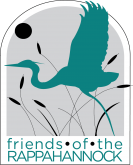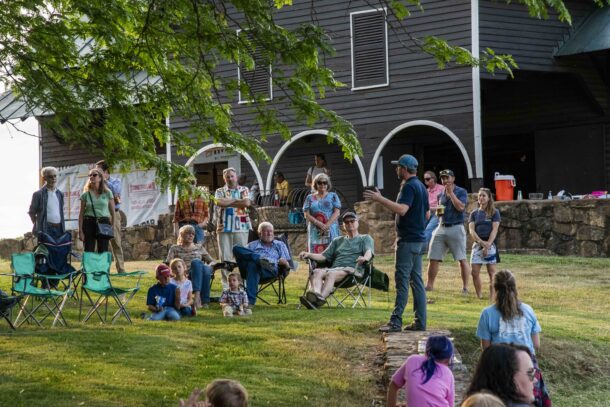I am not one to spend much time looking into statistics, but as we wrap 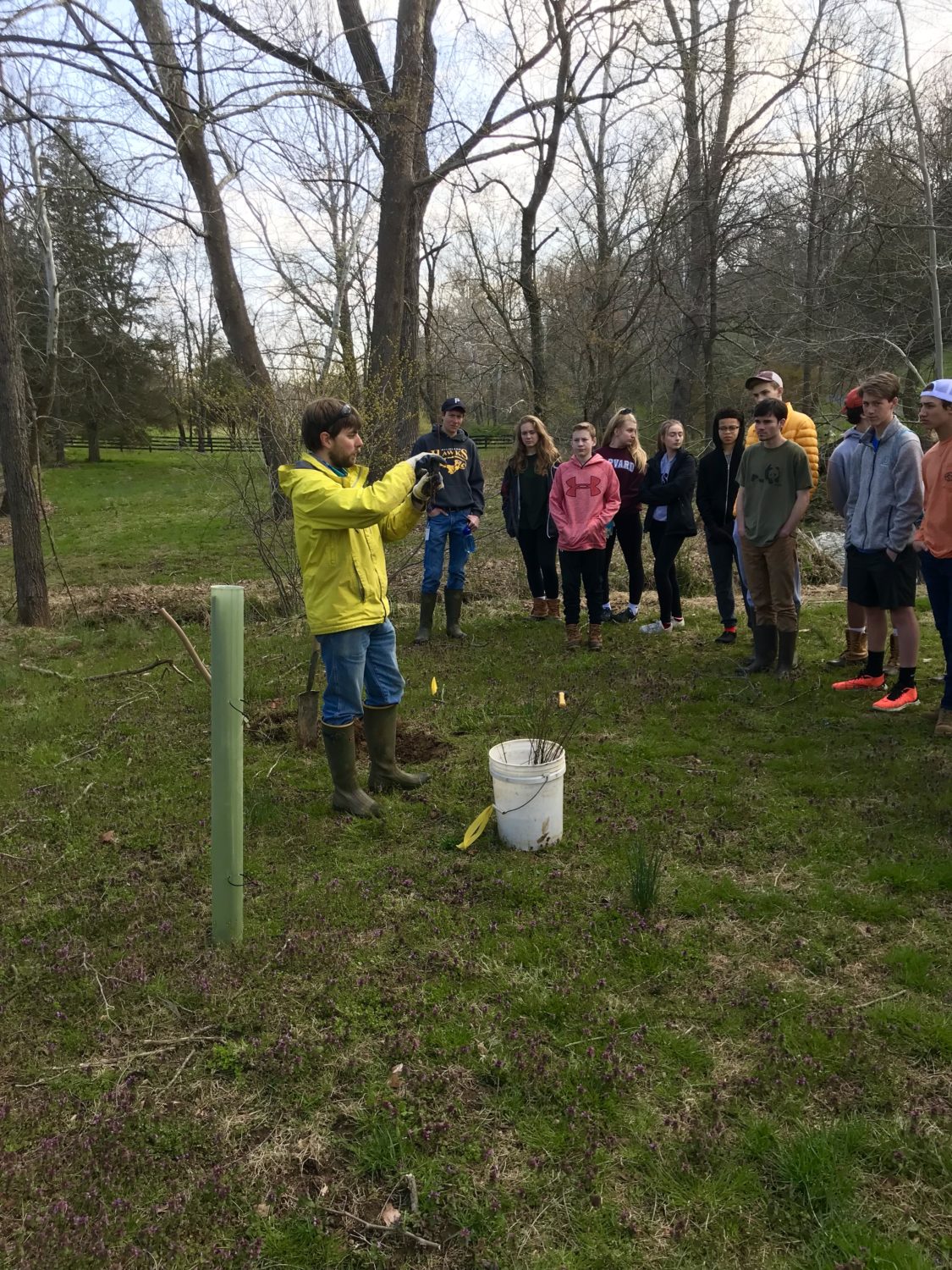 up our spring education schedule and run the numbers of how many students we have reached so far this year, it is an understatement to say I am impressed. It has been quite a busy spring, and as field trip coordinator, finding enough education staff to run our normal field trips while simultaneously scheduling educators to support our other programs has been a challenge; and these numbers explain why! In total, our education department saw 4,825 students of all ages, engaging these students in interactive environmental education experiences focusing on the Rappahannock River watershed. This total number is a combined effort including the Student Stream Team (funded by 2016-23 NFWF), STEM assemblies and piloting the E-STEM program (funded by 2018-05 Make It Happen), field trips at Friends of the Rappahannock, and meaningful watershed educational experiences (aka MWEEs) (funded by NOAA BWET).
up our spring education schedule and run the numbers of how many students we have reached so far this year, it is an understatement to say I am impressed. It has been quite a busy spring, and as field trip coordinator, finding enough education staff to run our normal field trips while simultaneously scheduling educators to support our other programs has been a challenge; and these numbers explain why! In total, our education department saw 4,825 students of all ages, engaging these students in interactive environmental education experiences focusing on the Rappahannock River watershed. This total number is a combined effort including the Student Stream Team (funded by 2016-23 NFWF), STEM assemblies and piloting the E-STEM program (funded by 2018-05 Make It Happen), field trips at Friends of the Rappahannock, and meaningful watershed educational experiences (aka MWEEs) (funded by NOAA BWET).
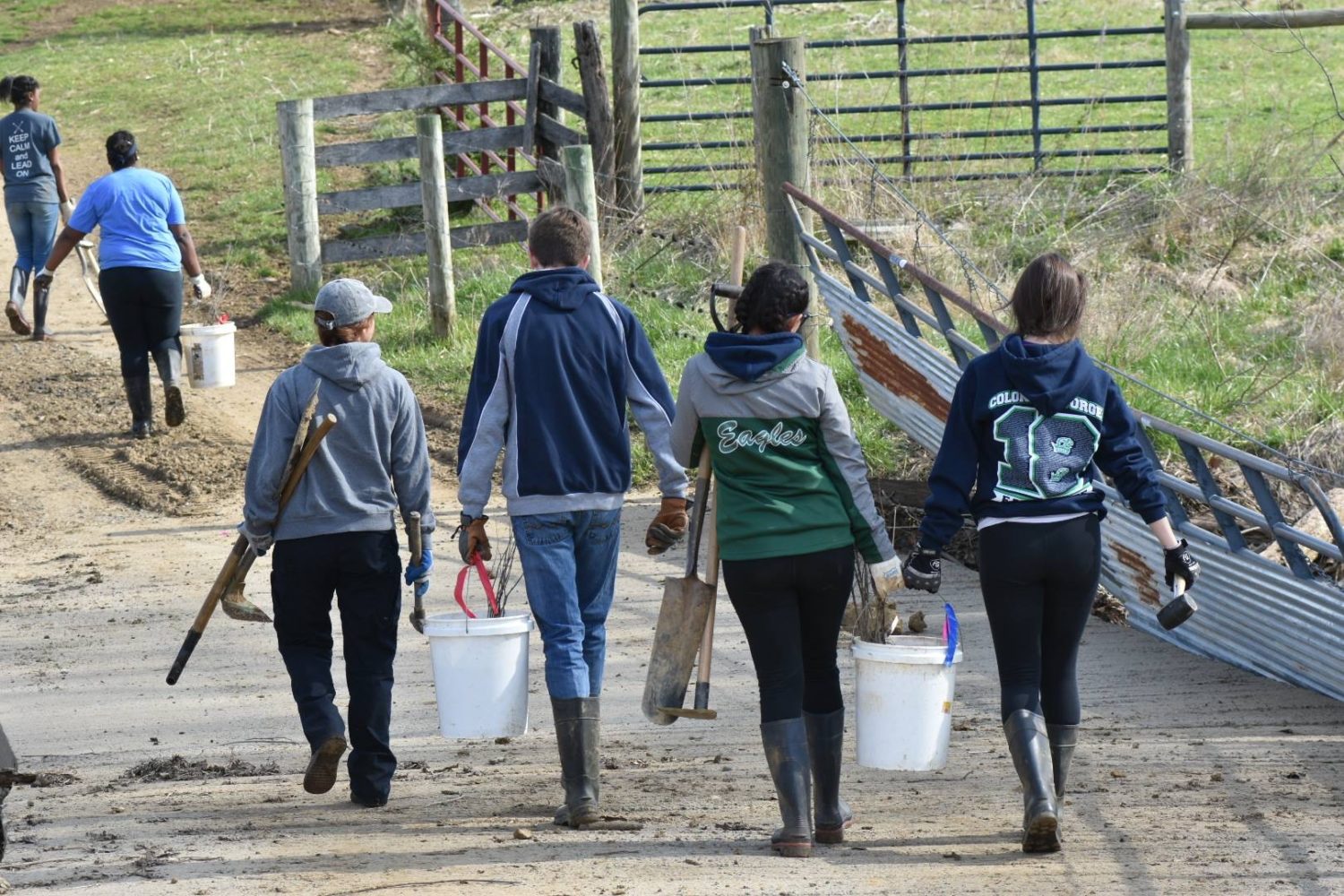 Let’s start at the top of the watershed. Our restoration team led eight education-based action projects in the upper Rappahannock River watershed with the Student Stream Team initiative funded by the 2016-23 National Fish and Wildlife Foundation grant. This program supported action-based learning for a total of 208 students in nine schools throughout the watershed. The focus of the projects was to restore riparian buffers along major tributaries of the Rappahannock River to restore habitat and stream health. In addition to planting trees, students applied this by analyzing the chemistry of the water at the planting site. They were able to numerically discern how the chemistry of the water is both directly and indirectly related to the abundance of native vegetation nearby. Adam reflected on this, “Experience in the field gives young students the skills and confidence to tackle even the most daunting environmental challenges. Getting these kids out of the classrooms and into an unfamiliar setting helps them grow and teaches them they can make a difference.”
Let’s start at the top of the watershed. Our restoration team led eight education-based action projects in the upper Rappahannock River watershed with the Student Stream Team initiative funded by the 2016-23 National Fish and Wildlife Foundation grant. This program supported action-based learning for a total of 208 students in nine schools throughout the watershed. The focus of the projects was to restore riparian buffers along major tributaries of the Rappahannock River to restore habitat and stream health. In addition to planting trees, students applied this by analyzing the chemistry of the water at the planting site. They were able to numerically discern how the chemistry of the water is both directly and indirectly related to the abundance of native vegetation nearby. Adam reflected on this, “Experience in the field gives young students the skills and confidence to tackle even the most daunting environmental challenges. Getting these kids out of the classrooms and into an unfamiliar setting helps them grow and teaches them they can make a difference.”
Further down the watershed in Remington and Culpeper, students were engaged in E-STEM projects. Whether it is crafting, designing, or creating, our educator Nancy Stalik is talented in many ways, and recently she successfully piloted FOR’s new E-STEM program. One of 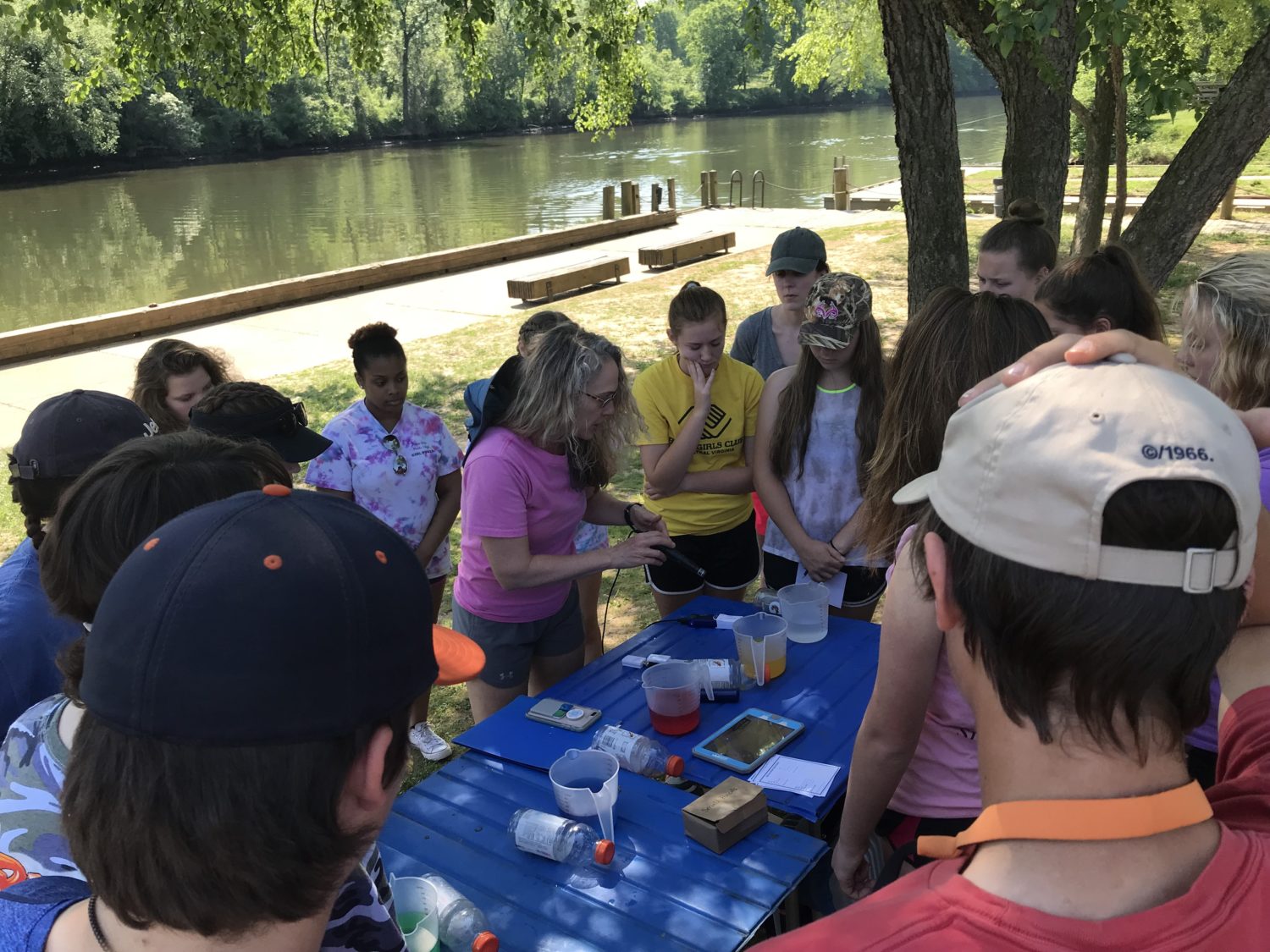 our most recent additions to the education agenda has been environmental themed STEM (science, technology, engineering, and math), otherwise known as E-STEM. Stalik has made design briefs for eight E-STEM lessons for all age groups (and two more are in the works). “Our E-STEM program began featuring strictly water-related activities but we quickly saw the value of including all renewable natural resources as they all further our mission for a healthy and scenic Rappahannock River,” said Stalik. Most of the lessons are targeted for certain grades, however they can be modified based on how much information is given in the background and materials available to use. Nancy led E-STEM for individual classes, in addition to grade-wide assemblies. Stalik said, “I’m struck by how many times teachers have stated they were worried about certain students because they don’t generally perform as well as the others. Yet, after our program, the teachers exclaim that those same students for whom they were concerned created some of the most thought-out and best performing prototypes!”
our most recent additions to the education agenda has been environmental themed STEM (science, technology, engineering, and math), otherwise known as E-STEM. Stalik has made design briefs for eight E-STEM lessons for all age groups (and two more are in the works). “Our E-STEM program began featuring strictly water-related activities but we quickly saw the value of including all renewable natural resources as they all further our mission for a healthy and scenic Rappahannock River,” said Stalik. Most of the lessons are targeted for certain grades, however they can be modified based on how much information is given in the background and materials available to use. Nancy led E-STEM for individual classes, in addition to grade-wide assemblies. Stalik said, “I’m struck by how many times teachers have stated they were worried about certain students because they don’t generally perform as well as the others. Yet, after our program, the teachers exclaim that those same students for whom they were concerned created some of the most thought-out and best performing prototypes!”
Midway down the Rappahannock River, 2,933 students came to 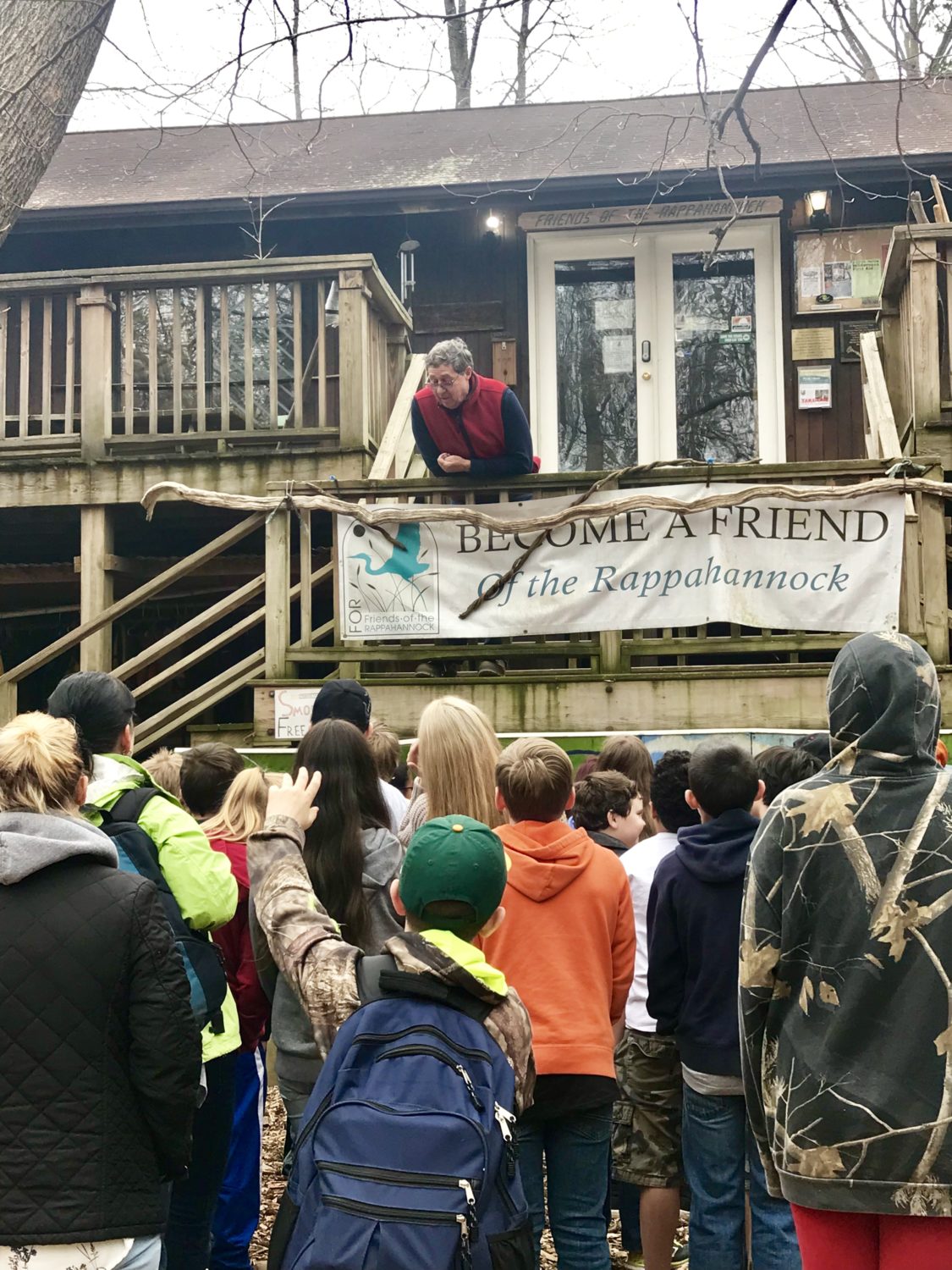 the Friends of the Rappahannock headquarters and nature preserve to learn about watersheds and habitats. It was almost as if Ms. Frizzle from the Magic School bus brought her kids to explore the wild nature preserve to discover insects on land and water, the water cycle, wetlands, and much more! “I think one of the most rewarding things about teaching field trips is watching the students be engaged in learning. Their classroom becomes a forest, and everything they learned about in the classroom becomes real when they experience in real life,” said Meredith Palumbo, field trip coordinator at FOR. One of the most exciting field trips so far was when we taught a kindergarten class in pouring down rain! Most had come in rain jackets and rain boots, and for those that only had a light jacket, they wore plastic ponchos.
the Friends of the Rappahannock headquarters and nature preserve to learn about watersheds and habitats. It was almost as if Ms. Frizzle from the Magic School bus brought her kids to explore the wild nature preserve to discover insects on land and water, the water cycle, wetlands, and much more! “I think one of the most rewarding things about teaching field trips is watching the students be engaged in learning. Their classroom becomes a forest, and everything they learned about in the classroom becomes real when they experience in real life,” said Meredith Palumbo, field trip coordinator at FOR. One of the most exciting field trips so far was when we taught a kindergarten class in pouring down rain! Most had come in rain jackets and rain boots, and for those that only had a light jacket, they wore plastic ponchos.![]()
With funding from the NOAA BWET grant, FOR’s educator Lowery Becker undertook a MWEE program for 822 sixth grade students from King George, Westmoreland, Richmond, Lancaster, Northumberland, Middlesex, and Essex Counties. Students from Richmond and Lancaster Counties participated in field experiences at Belle Isle State Park, rotating through stations led by FOR, Northern Neck Soil and Water Conservation District, VA Extension, VA Department of Forestry, Tidewater Oyster Growers Association, and Belle Isle State Park. Additional support for this event came from the Northern Neck Master Naturalists and Menokin Foundation. Students from Essex and Westmoreland Counties went to the Menokin Foundation to participate in activities led by Menokin Foundation, 4H, and FOR. The students participating this spring did projects that include leading water conservation campaigns, planting a riparian buffer, and building oyster sentinels. Becker said, “The most challenging part of this experience has been coordinating all of the different schedules, between the schools and the partner organizations, it can be a lot. The most rewarding part of this program is being a role model to the students. My heart skips every time I hear, “Hey Lowery! I’m so glad you are here today! What are we going to do?” It has been an incredible experience.”
As you can see, we have had a very crazy, yet meaningful spring. We could not have done this without the support from the education team 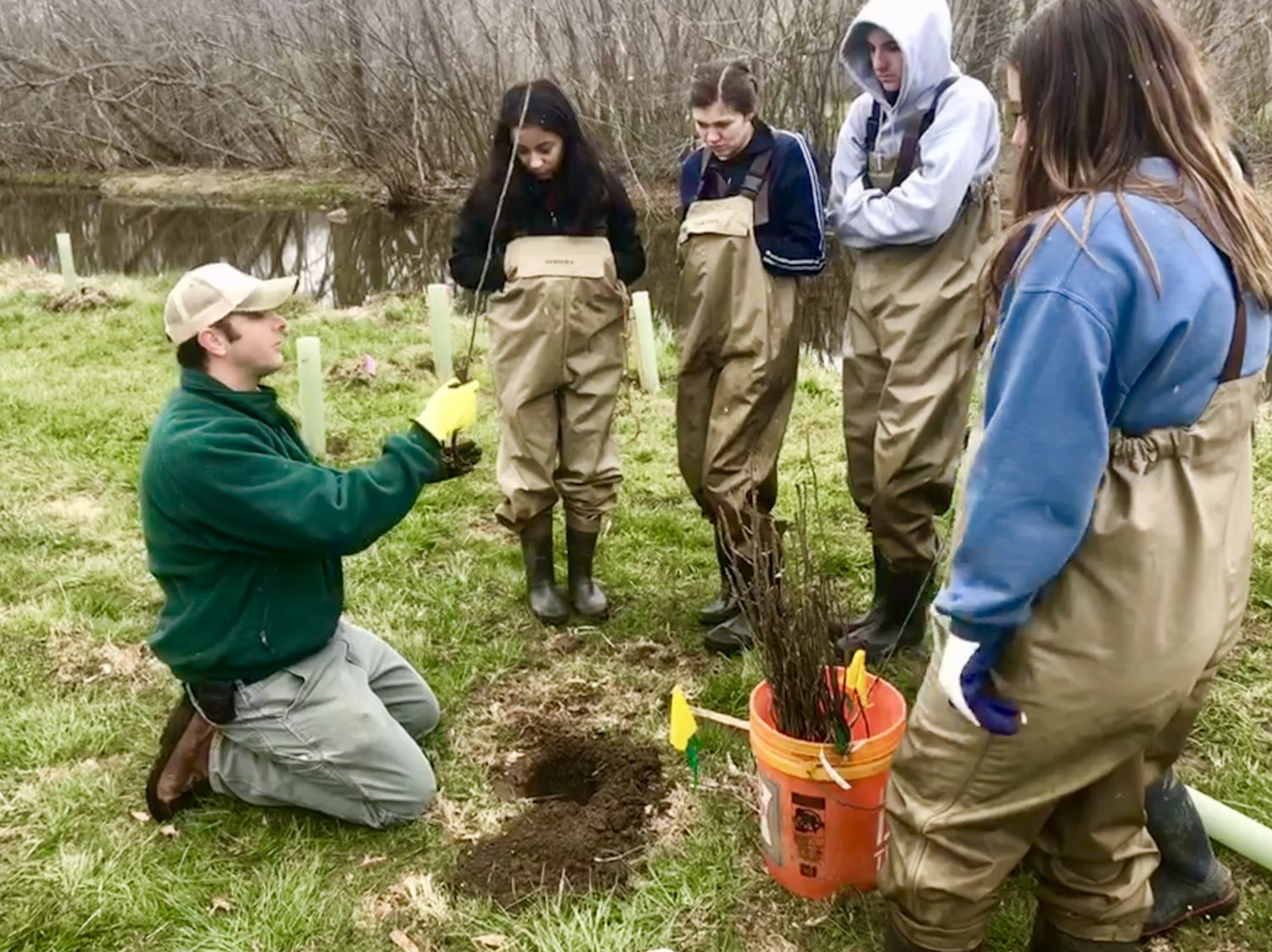 and all other staff members at FOR, encouraging our educational programs throughout the watershed. One of our educators, Nick Cadwallender reflected on his time teaching field trips at FOR, “I tell students visiting FOR, ‘If you are quiet and observant while you’re here you will see amazing things.’ And they do, a black snake stalking a baby rabbit, a goose walk out of the river to graze 5 feet from them at the canoe landing, a turtle no bigger than a thumbnail crossing the canal path, a scurry of carrion beetles devouring a frog. Our education programs give children the opportunity to know nature, and in knowing it, the opportunity to care.”
and all other staff members at FOR, encouraging our educational programs throughout the watershed. One of our educators, Nick Cadwallender reflected on his time teaching field trips at FOR, “I tell students visiting FOR, ‘If you are quiet and observant while you’re here you will see amazing things.’ And they do, a black snake stalking a baby rabbit, a goose walk out of the river to graze 5 feet from them at the canoe landing, a turtle no bigger than a thumbnail crossing the canal path, a scurry of carrion beetles devouring a frog. Our education programs give children the opportunity to know nature, and in knowing it, the opportunity to care.”
